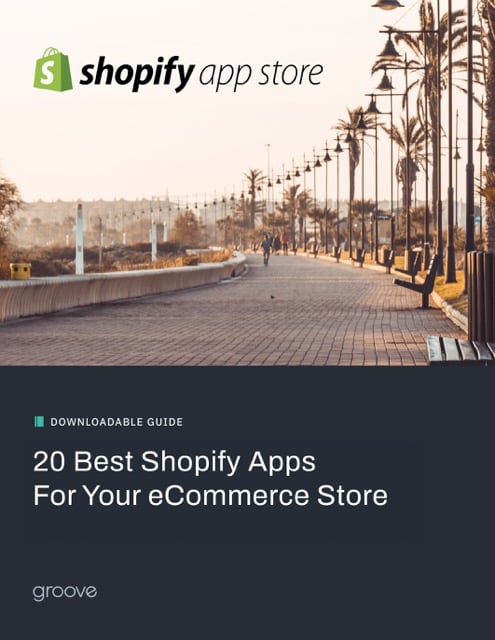Every marketer wants to drive organic traffic by creating a 1-to-1 relationship with their brand. But how many post-it notes do you have to throw in the trash can before you arrive on this killer idea?
With buyers' increased expectations from brands, creating a successful marketing strategy is more important than ever. Continue reading for some valuable tips for creating your content strategy framework.
Creating A Content Strategy Framework
The reality is that the days of brainstorming alone in a room are over. Today’s inbound strategy is more about the approach you take rather than waiting for inspiration to appear. So before you try to brainstorm on your own, be sure you're following these steps to make your efforts more rewarding:
- Set goals
- Know your audience
- Do your research
- Be relevant
- Create a voice
- Experiment with different formats
- Make it shareable
- Test, test, test!
Set Goals
Start by identifying what is reasonable to achieve in a set amount of time. To encourage improvement, the goals you are setting should be SMART - Specific, Measurable, Attainable, Realistic and Timely.
Let's say your goal is to "publish more blog posts." How are you going to do this? What are you going to measure? Turn this broad goal into a SMART goal by aiming to "Publish 10 blogs by June 1st to increase organic traffic by 10%."
SMART goals clearly define an agreed-upon timeline and a measurable outcome. That's why identifying your goals upfront are important - it gives you a benchmark to evaluate future performance.
Know Your Audience
Defining your audience is the key to a successful content strategy framework. We recommend creating target personas of your current and potential customers. When creating personas, consider demographics and psychographics.
Demographics include things like age, race, income and location, while psychographics factors in personality, values, interests and more. These two attributes create a comprehensive view of how your audience thinks and behaves.
As you go through this process, remember that 2-3 personas is plenty to get you started. Identify the customers that provide the most value to your bottom line and cater to their interests. Remember that tailored content improves relevance and can ultimately motivate customers to act.
Do Your Research
Many companies strive to improve search presence. To ensure your content ranks, research keyword search volumes and competition to identify areas where your brand can have the biggest impact.
Begin by making a list of 10 keywords you'd like to rank for. Then, enter them into the Google AdWords Keyword Planner to evaluate search volumes and competition. Be on the lookout for words with low competition and high search volume.
Don't be afraid to use SEO tools to perform keyword research. Check out the eCommerce SEO tools we recommend.
Another important step is to evaluate gaps in your competitors’ content strategies. Look at the content your competitors are publishing, and identify ways to fill the blank space and make it stand out.
Be Relevant
If your content is irrelevant to your audience, you're not going to see significant results. Have a clear understanding of what your audience cares about and consider the content that they want to see. What type of information provides value to them?
Provide them with interesting and relevant content. Content marketing isn't always focused on a product your brand is trying to sell. Rather, a great content strategy framework involves providing value to your audience by sharing your expertise.
Create A Voice
Strong branding stretches beyond visual assets. Think about your company’s personality and write from that specific voice. If you don’t have a brand style guide, take the time to develop one that defines your brand. This can include key phrases or adjectives to describe your culture and personality.
Whatever you develop, make sure you stick with it. Consistency becomes especially important if more than one person writes content for your brand. Keep things professional by ensuring a consistent voice throughout all of your content.
Experiment With Different Formats
The sky is the limit when it comes to content formats. However, be sure to make your format accessible for your audience. For example, .zip files might not make sense for an audience that primarily browsers on mobile devices. Give the people what they want and meet them where they are.
If you’re looking for a new format to explore, consider resources such as guides, eBooks, blogs, videos and infographics. Individual tactics will vary from business to business, so take the time to experiment and find what works for your business.
Make It Shareable
Design content that your audience wants to share. This means choosing a format and topic that truly relates to your target personas.
Though there are many reporting statistics for measuring your content strategy framework, shares can be a great KPI to measure engagement. That's why it's critical to design your content in a way that it can be easily shared - like optimizing your headlines and preview images for social sharing.
Test, Test, Test!
Testing your strategy is the best way to make sure it’s working. When it comes to testing, don’t be afraid to try new things. Tests can range from headlines to images to calls-to-action and more.
The key is to see a significant difference; this ensures your results are valid. For more insights, utilize these tips for running your next A/B test.
Conclusion
If increasing organic traffic is one of your goals for the year, give this method a try. Creating a captivating content strategy framework is just one part of maintaining a complete inbound marketing strategy.
Interested in learning how Groove can help to improve your eCommerce SEO marketing strategy? Contact us through the form below with any questions or comments, and our team will be in touch!

E-BOOK
20 Best Shopify Apps For Your eCommerce Store
Explore tags:
About the author
Subscribe to the Groove Newsletter
Get the latest updates and insights straight to your inbox



